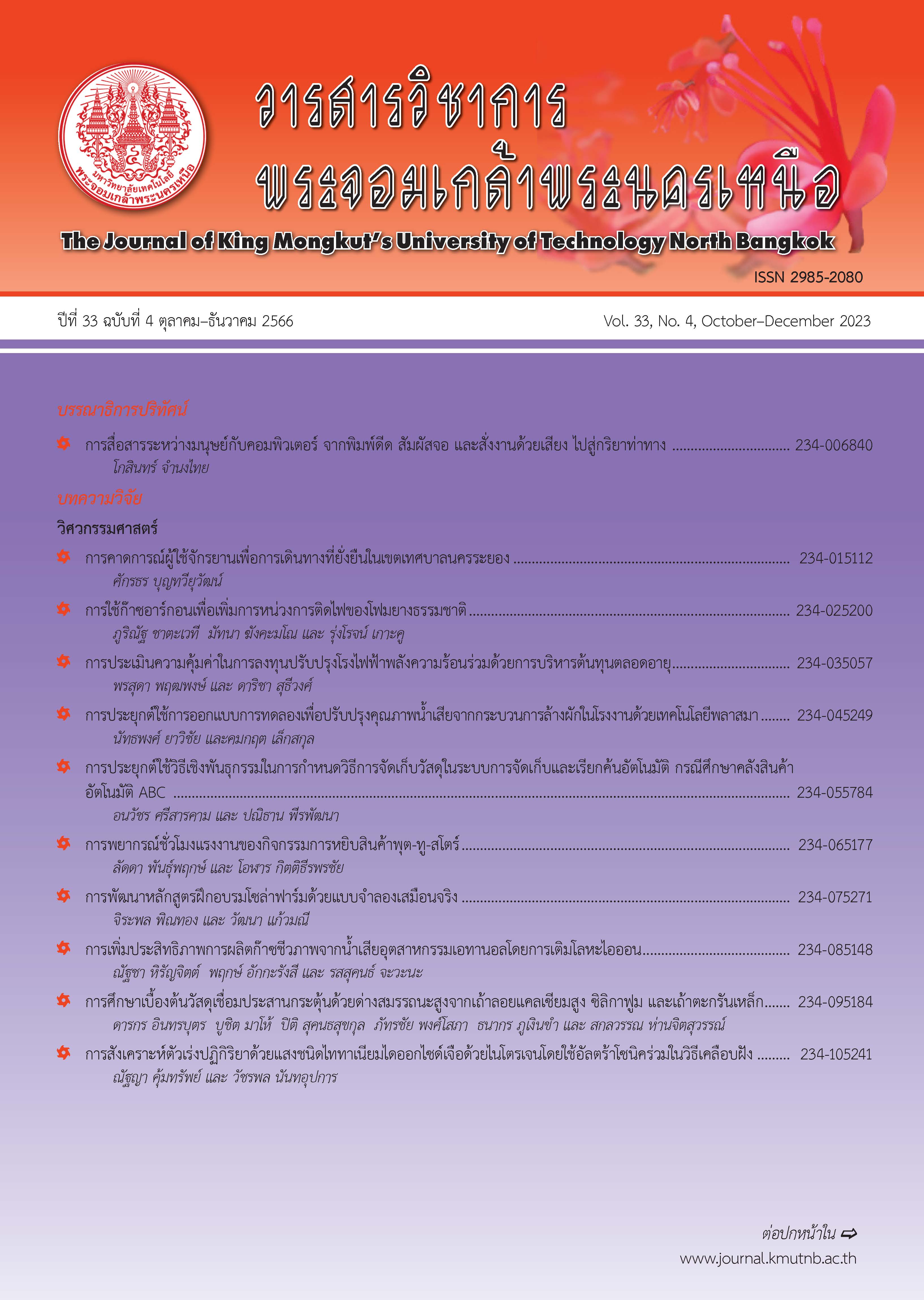การคาดการณ์ผู้ใช้จักรยานเพื่อการเดินทางที่ยั่งยืนในเขตเทศบาลนครระยอง
Main Article Content
บทคัดย่อ
ในปัจจุบัน ปัญหาการจราจรติดขัดในเขตเทศบาลนครระยองทวีความรุนแรงมากยิ่งขึ้นเรื่อยๆ ในชั่วโมงเร่งด่วน และยังไม่ได้รับการแก้ไขในระยะยาว ส่วนหนึ่งเกิดจากการอพยพเข้ามาของประชากรต่างถิ่นเพื่อเข้ามาทำงานใน จ.ระยอง และการไม่มีระบบขนส่งสาธารณะขนาดใหญ่ที่มั่นคง มีระดับการให้บริการที่ดี และความปลอดภัย ทำให้ประชาชนในจังหวัดระยองต้องใช้รถยนต์และจักรยานยนต์ส่วนตัวในการเดินทาง ส่งผลกระทบต่อการใช้พลังงานอย่างสิ้นเปลือง และการปล่อยมลพิษทางอากาศของกลุ่มก๊าซเรือนกระจก (กลุ่มก๊าซไฮโดรคาร์บอน (HC) , คาร์บอนมอนอกไซด์ (CO), ไนโตรเจนออกไซด์ (NOx) และ คาร์บอนไดออกไซด์ (CO2)) อย่างมาก แนวทางการแก้ไขปัญหาการจราจรติดขัดอย่างยั่งยืน คือ ลดการเดินทางโดยรถยนต์ส่วนตัวลง และเน้นการเดินทางโดยการใช้จักรยานและการเดินเท้าเชื่อมต่อกับระบบขนส่งมวลชน งานวิจัยนี้คืองานต่อยอดจาก ศักรธร และ สว่าง (2563) ที่ได้มีการนำเสนอแนวทางการออกแบบทางจักรยานร่วมกับการประชุมรับฟังข้อคิดเห็นจากประชาชนในพื้นที่ศึกษาบนถนนตากสินมหาราช และจันทอุดม ในเขตเทศบาลนครระยองแล้ว ซึ่งงานวิจัยนี้จะประยุกต์ใช้แบบจำลองการจราจรและขนส่งในการคาดการณ์จำนวนผู้ใช้จักรยานเชื่อมต่อระบบขนส่งมวลชน โดยผลงานวิจัยระบุว่า เมื่อมีการก่อสร้างทางจักรยาน ทางเท้าและระบบขนส่งมวลชนที่มีคุณภาพสูงแล้วจะสามารถปรับเปลี่ยนรูปแบบการเดินทางของประชาชนจากรถยนต์ส่วนตัวให้มาใช้จักรยานและการเดินเท้าเชื่อมต่อกับระบบขนส่งมวลชนได้มากถึง 60 เปอร์เซ็นต์
Article Details

อนุญาตภายใต้เงื่อนไข Creative Commons Attribution-NonCommercial-NoDerivatives 4.0 International License.
บทความที่ลงตีพิมพ์เป็นข้อคิดเห็นของผู้เขียนเท่านั้น
ผู้เขียนจะต้องเป็นผู้รับผิดชอบต่อผลทางกฎหมายใดๆ ที่อาจเกิดขึ้นจากบทความนั้น
เอกสารอ้างอิง
Prachachat. (2020, July). 10 things that make you to know Rayong [Online] (in Thai). Available: https://www.prachachat.net/d-life/ news-491377
S. Boontaveeyuwat and S. Panjun, “Designing bikeway for sustainable transport in Rayong municipality,” The Journal of KMUTNB, vol. 30, no. 4, pp. 589–599, 2020 (in Thai).
S. Boontaveeyuwat, Transportation Engineering. Bangkok : Kasetsart University Press, 2019 (in Thai).
Bureau of Highway Safety, “Travelled vehiclekilometers on highway report,” Department of Highways, March. 2019.
Federal Highway Administration, “Foundational knowledge to support a long-distance passenger travel demand modeling network framework,” U.S. Department of Transportation. Rep. DTFH61-10-R-00036, March 2015.
Florida Department of Transportation, “Documentation and procedural updates to the florida standard urban transportation model structure (FSUTMS),” FSUTMS Trip Generation Model (GEN), Technical Report No. 3, June 1997.
D. L. McKinstry and L. G. Nungesser, “Transferability of trip generation rates for selected special generators,” in Transportation Planning Methods Process 3rd National Conference, Dallas, Texas, 1991, pp. 819–840.
T. Litman, Understanding Transport Demands and Elasticities: How Prices and Other Factors Affect Travel Behavior. Canada: Victoria Transport Policy Institute, 2013.
M. Ben-Akiva, E. Cascetta, P. Coppola, A. Papola, V. Velardi, and T. Vergata, “High speed rail demand forecasting: Italian case study,” European Transport Conference Proceeding, Scotland, UK.: Glasgow, 2010.
G. Kocur, Guide to Forecasting Travel Demand and Direct Utility Assessment, The Office; Springfield, Va, 1982.
C. J. Khisty and B. K. Lall, Transportation Engineering : An Introduction, 3rd ed. New Jersey: Pearson Education, 2003.
Comsis Corporation. UTPS Highway Network Development Guide, Department of Transportation, 1983.

